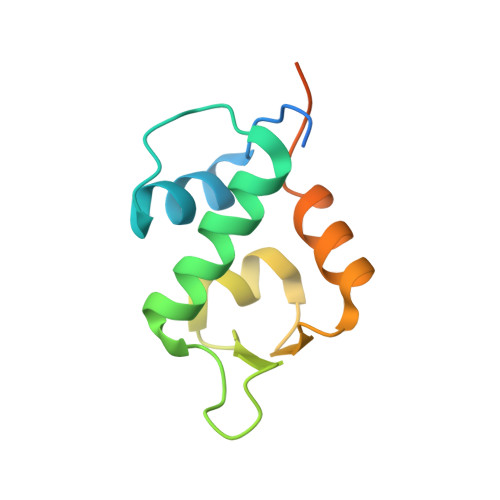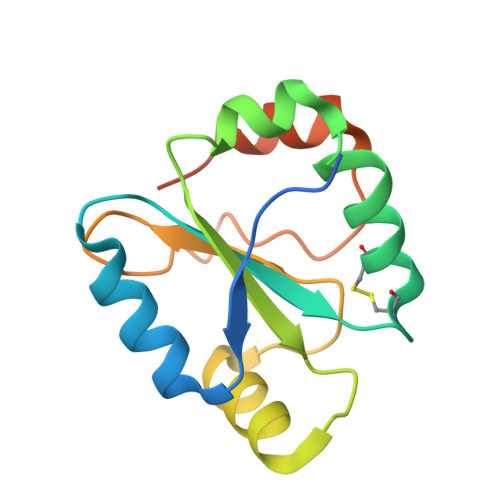A rational blueprint for the design of chemically-controlled protein switches.
Shui, S., Gainza, P., Scheller, L., Yang, C., Kurumida, Y., Rosset, S., Georgeon, S., Di Roberto, R.B., Castellanos-Rueda, R., Reddy, S.T., Correia, B.E.(2021) Nat Commun 12: 5754-5754
- PubMed: 34599176
- DOI: https://doi.org/10.1038/s41467-021-25735-9
- Primary Citation of Related Structures:
7AYE - PubMed Abstract:
Small-molecule responsive protein switches are crucial components to control synthetic cellular activities. However, the repertoire of small-molecule protein switches is insufficient for many applications, including those in the translational spaces, where properties such as safety, immunogenicity, drug half-life, and drug side-effects are critical. Here, we present a computational protein design strategy to repurpose drug-inhibited protein-protein interactions as OFF- and ON-switches. The designed binders and drug-receptors form chemically-disruptable heterodimers (CDH) which dissociate in the presence of small molecules. To design ON-switches, we converted the CDHs into a multi-domain architecture which we refer to as activation by inhibitor release switches (AIR) that incorporate a rationally designed drug-insensitive receptor protein. CDHs and AIRs showed excellent performance as drug responsive switches to control combinations of synthetic circuits in mammalian cells. This approach effectively expands the chemical space and logic responses in living cells and provides a blueprint to develop new ON- and OFF-switches.
- Laboratory of Protein Design and Immunoengineering (LPDI) - STI - EPFL, Lausanne, Switzerland.
Organizational Affiliation:

















